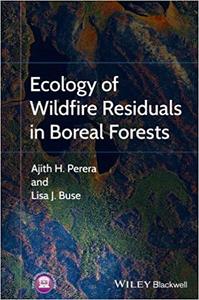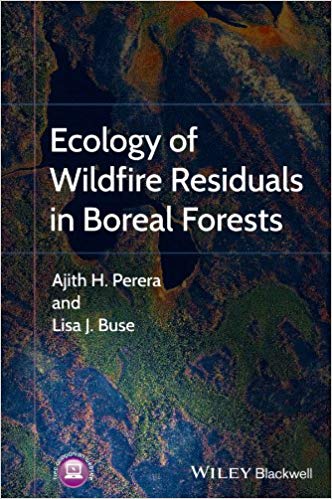Ajith Perera, Lisa Buse, "Ecology of Wildfire Residuals in Boreal Forests"
2014 | pages: 272 | ISBN: 1444336533 | PDF | 9,7 mb
2014 | pages: 272 | ISBN: 1444336533 | PDF | 9,7 mb
This book will draw attention to the residuals in pan-boreal forest fires and synthesize the state of knowledge. It will do so by: (a) Examining the concept of fire residuals from different perspectives, (b) Reviewing the growing body of scientific literature on the topic, © Conceptualizing the process of residual formation in relation to scale of fire disturbance, (d) Discussing the roles of fire residuals in ecological processes, (e) Describing approaches and methods of studying fire residuals, (f) Compiling and summarizing what is known about fire residual vegetation with respect to their extent, spatial patterns, and temporal changes, (g) Discussing how the knowledge of fire residuals is applied in forest management, including social perspective, and (h) Synthesizing the state of knowledge, identifying its uncertainties and gaps, and proposing research hypotheses. The authors use pan-boreal scientific literature on boreal fire residuals as well as fire behaviour, fire ecology, habitat ecology, and geochemical processes. For readers this book will be a reference for knowledge to date and a meta-analysis of research trends during the past few decades. In addition, the authors judiciously include views constructed from their observations and research experience, from boreal Canada, when they synthesize and conceptualize the knowledge. They also incorporate information extracted from their discussions and interactions with North American and European ecologists, forest managers, and conservationists to provide insight to different views and perspectives on the fire residuals of the boreal forest system. This book will inform researchers and students who study boreal forest ecology, as well as policymakers and forest managers who apply forest ecological knowledge in forest management.
This book provides a review and coalescence of the current knowledge of boreal forest fire residuals, which at present is sporadic and has not been unified or synthesized. Moreover, these are presently viewed myopically and parochially, rather than holistically. The intent of the synthesis is to identify knowledge uncertainties and gaps and propose topics for future research. Most importantly, it brings together fire behaviour, ecological scale, vegetation ecology, and conservation biology to conceptualize forest fire residuals. Although focused on boreal forests, the contents and principles presented are also be pertinent to other large-scale fire driven forest systems, such as dry montane forests in North America and Australian eucalypt forests. This book will add to the current knowledge base by providing a source of significant literature to-date, an in-depth examination of baseline concepts of forest fire residuals, as well as questions and research ideas to address the identified gaps. The timing is ideal because the knowledge base is beginning to expand and the interest in the topic is increasing: such a synthesis would provide an important foundation for future advances in this very relevant topical area. The book is a compact, yet comprehensive, dissertation of remnant vegetation in boreal forest fires with respect to their formation, role in ecological processes, applied importance, and a synthesis of state-of-the-knowledge and future research directions. The scope is boreal forests worldwide, including North America, Europe, and Asia. Brief TOC: Why the interest in boreal fire residuals; what are fire residuals; how are fire residuals formed; what are the ecological roles of the fire residuals; what is the role of residuals in forest management applications; synthesis, knowledge, uncertainties and research needs.
My Link



